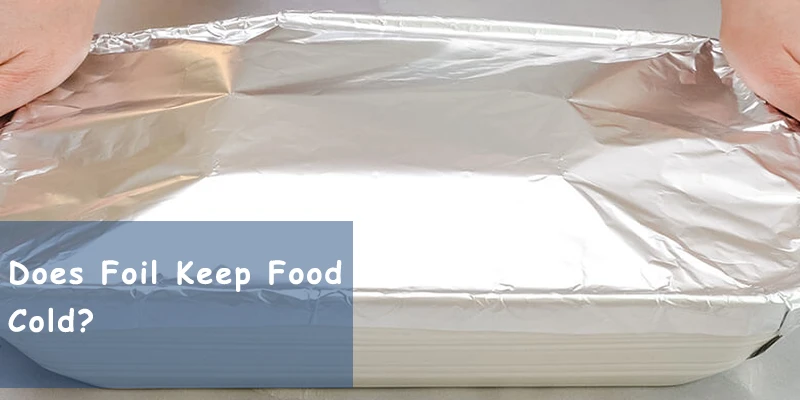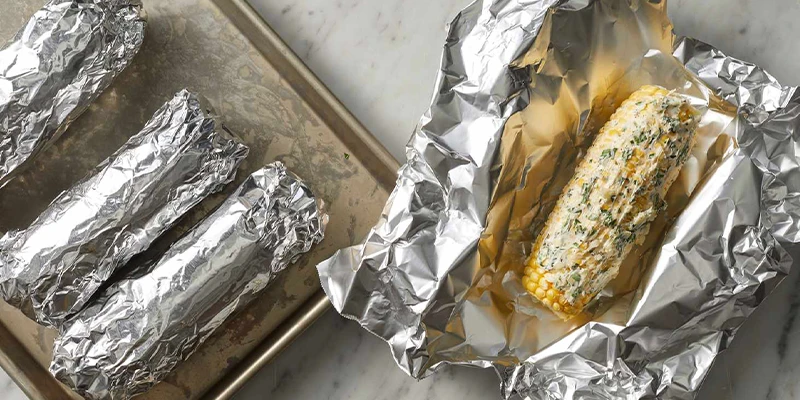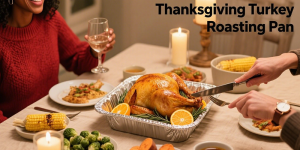Aluminum foil is a kitchen tool for wrapping food, grilling, and baking. But can foil actually keep food cold during picnics, road trips, or outdoor events? While tin foil has insulating properties, its ability to maintain low temperatures depends on how you use it. This article breaks down the science and shares practical tips for maximizing foil’s chilling power.

How Does Foil Affect Food Temperature
Foil can reflect heat rather than absorbing it. Its ability to block radiant heat makes it useful for both keeping food warm and preventing heat transfer—but does it work for cooling?
Aluminum foil’s reflective surface slows heat transfer in two ways:
- Reflects Radiant Heat: Foil’s bright side reflects external heat, preventing it from warming your food.
- Keep Moisture: Wrapping food tightly minimizes exposure to air, reducing evaporation that speeds up spoilage.
However, foil conducts temperature quickly, meaning it won’t create a long-term “cold barrier” like insulated coolers. For short-term use (1–2 hours), it can help, but pairing it with ice packs or cooler bags can extend freezing.
When Does Foil Keep Cold Work Best
Short-term quick freezing and preservation (2-3 days)
Suitable for wrapping fatty fish (such as salmon), skin-on meat and other oxidation-sensitive ingredients. Aluminum foil has better airtightness than plastic wrap.
Pre-freezing protection
Wrapping food with aluminum foil before putting it in the freezer can prevent surface freezer burn, especially suitable for steak, bacon, etc.
Freezing in separate packages
Freezing large pieces of food (such as a whole chicken) with aluminum foil to separate parts, which can prevent adhesion and facilitate on-demand use.
Frozen food that needs to be heated directly
Food wrapped in aluminum foil (such as sweet potatoes and corn) can be put into the oven directly from the frozen state, avoiding the need to change containers.
How to Use Foil to Keep Food Cold

Here’s a step-by-step guide to effectively using aluminum foil to keep food cold:
Step 1: Pre-Chill the Food
- Refrigerate or freeze food before wrapping (cold food stays cold longer).
- For drinks, use pre-frozen ice packs or frozen water bottles.
Step 2: Wrap Tightly in Aluminum Foil
- Use heavy-duty foil for better insulation.
- Wrap food completely, sealing all edges to block air and heat.
- For extra insulation, double-layer the foil.
Step 3: Add an Insulating Layer
- Wrap the foil-covered food in a towel, newspaper, or bubble wrap to trap cold air.
- Place in an insulated cooler or lunch bag for longer cooling.
Step 4: Use Ice Packs for Extended Cooling
- Place wrapped food next to ice packs or frozen gel packs.
- Avoid direct contact (foil conducts cold quickly—wrap ice packs in a thin cloth first).
Step 5: Keep in a Cool Environment
- Store in the shade or a cooler to minimize heat exposure. Avoid opening frequently to retain cold air.
Better Alternatives to Keep Food Cold
If you need to keep food chilled for hours, consider these more effective methods:
- Insulated Coolers or Lunch Bags – These trap cold air and prevent heat exchange.
- Ice Packs or Frozen Gel Packs – Placing these near food helps maintain low temperatures.
- Vacuum Insulated Containers – These provide superior temperature retention for both hot and cold foods.
- Double-Wrapping with Foil + Towel – Adding a towel around foil-wrapped food can slow heat transfer.
| Material | Pros | Cons |
| Aluminum Foil | Reflective, blocks light, reusable | Conducts heat, tears easily |
| Plastic Wrap | Seals moisture, lightweight | Less durable, not eco-friendly |
| Insulated Cooler | Long-term cold retention | Bulky, requires ice |
FAQs
Q: Can foil keep ice from melting?
A: No—foil conducts temperature, so ice melts faster if wrapped directly. Use foil to reflect heat away from an ice-filled cooler.
Q: Is it safe to wrap cold food in foil?
A: Yes, but avoid using foil for acidic foods (e.g., tomatoes), which can react with aluminum.
Q: Does double-layer foil work better?
A: Yes! The extra layer slows heat transfer slightly.



